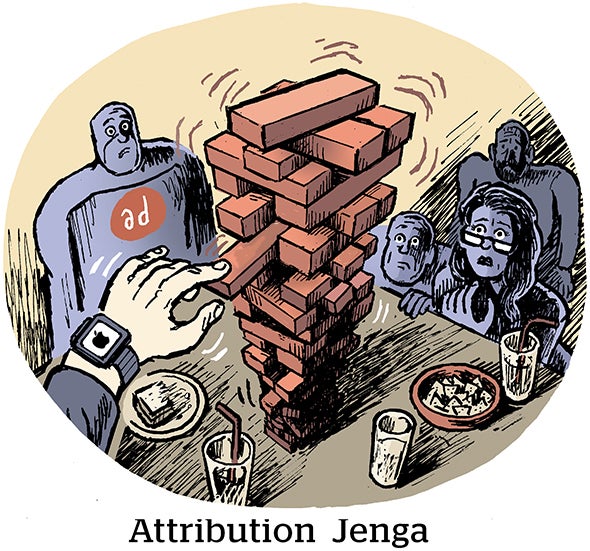The Power of the Purse (© 2006, Prentice Hall) takes a behind-the-scenes look at how today’s smartest marketers are discovering the immense power of women consumers and using it to achieve breakthrough campaign results. CHIEF MARKETER web editor Tim Parry discussed the book, as well as some of today’s marketing trends and myths, with author Fara Warner.
CHIEF MARKETER: What lessons will marketers learn by reading “The Power of The Purse?”
Warner: There are no magic bullets, no special recipes to marketing to or designing products and services for women. That’s the first and biggest lesson. For far too long, companies have wanted to believe or have even been told by marketing gurus that there was going to be a simple, easy-to-implement tactic that would make women like or even love their brand or company. But each of the companies profiled in the book have adapted to women customers in their own unique ways based on what the specific company needed to do as opposed to following a prescription or, worse, mimicking their competitors.
However, even though the strategies these companies took are very different, there are some key questions that any company should be asking itself as it faces the tough challenge of reaching today’s women. I outline 10 questions in Chapter 9. I’ll focus on the three I believe are key to jumpstarting the process of adapting to women consumers:
- Do you still think of women as a minority? If your company still thinks of women as a “niche” market, you need to change your thinking now. I still know of many companies that have their “women’s marketing” programs housed inside the “minority marketing” group. How exactly are women a minority? We are the majority of the population. We control or influence 90% of all consumer purchases in this country. We now dominate consumption in areas such as home buying, automobiles, business travel, and electronic goods—all of which were or are still considered male-dominated by some in those industries. Once you shift your thinking from women as a minority to women as the majority, you are on your way to doing a better job with women. That goes for companies that may think their product doesn’t sell to women or wouldn’t appeal to women. If Cialis and Levitra, two male impotence drugs, have been able to increase their market share by focusing on women, then I think many consumer products once considered solely male have a shot at winning if they focus on women.
- Do you have stereotypical views of women that haven’t changed in more than a year? Women are a fast-changing, ever-evolving group. What worked with women 10 years ago won’t work with them today. In fact I’d say that what worked even a year ago might not work with women today.
Avon realized that its middle-of the-road, almost conservative ideas of beauty were no longer relevant to younger generations of women who had grown up in far different times than their mothers and even their sisters sometimes. These women were looking for something edgier, more individualistic, and far more adaptable to their lifestyles than Avon. That insight, driven by numerous focus groups, led to the creation of Mark, an all-new brand for the more than century-old company.
Moreover, keep in mind that women can be as different from each other as they are from men. Just because a campaign or product works for one group of women, don’t believe that it will work for all women. Let me give you a brief example. A few years ago, Volvo showed off a concept vehicle that was designed by a group of women engineers for women consumers. It was an admirable attempt at addressing issues of what women wanted in an industry that has failed often to really create products and services that worked well for women. But when they pointed to a hole in the headrest of the driver’s seat and called it a “ponytail” holder, I just shook my head of very short hair. So all women have long hair? Is that what Volvo hoped I would come away thinking? I doubt it, but no matter how good the other ideas might have been in the concept car, they faded out of my mind because the ponytail stereotype turned me off.
- Do you think if you focus on women consumers, you will turn off male consumers? This is a major concern for many companies as they begin placing women front and center in their marketing and product strategies. But two companies—The Home Depot and McDonald’s—found that by focusing on women they were able to draw in more men as well.
McDonald’s created its Premium Salads line using women’s-only focus groups. But it didn’t market the products specifically “for women.” By staying away from dubbing salads a “women’s product,” McDonald’s solved the problem of turning off men. Instead, they were simply pitched as healthy choices at the fast-food restaurant. McDonald’s is now the world’s largest purveyor of salads, and men buy 40% of them.
The Home Depot used a “couple centered” approach to renovating its home-improvement stores. Instead of creating stores that women would feel comfortable in and potentially turning off men, they focused on how couples shopped together at the stores. The idea came out of survey results that showed that “home perfectors,” couples who shopped together for renovation products for the homes, made up 25% of the shoppers but 50% of the company’s revenues. So when The Home Depot renovated its stores it made changes that were applicable to both men and women and kept certain areas of the stores exactly the same as they always were. For example, the area where the tools are sold—called The Tool Corral—wasn’t changed despite ist being a crowded area with lots of power tools and displays. Women said they wanted to shop for tools where the men shopped. However, in other areas the company did renovate so that it would be easier for anyone to shop for products such as paint, carpet, and bathroom fixtures for example. But these weren’t always driven by a gender focus. Instead, areas such as paint, where color choice is so important, did need better lighting and less of the company’s signature orange shelving.
Click here to continue



